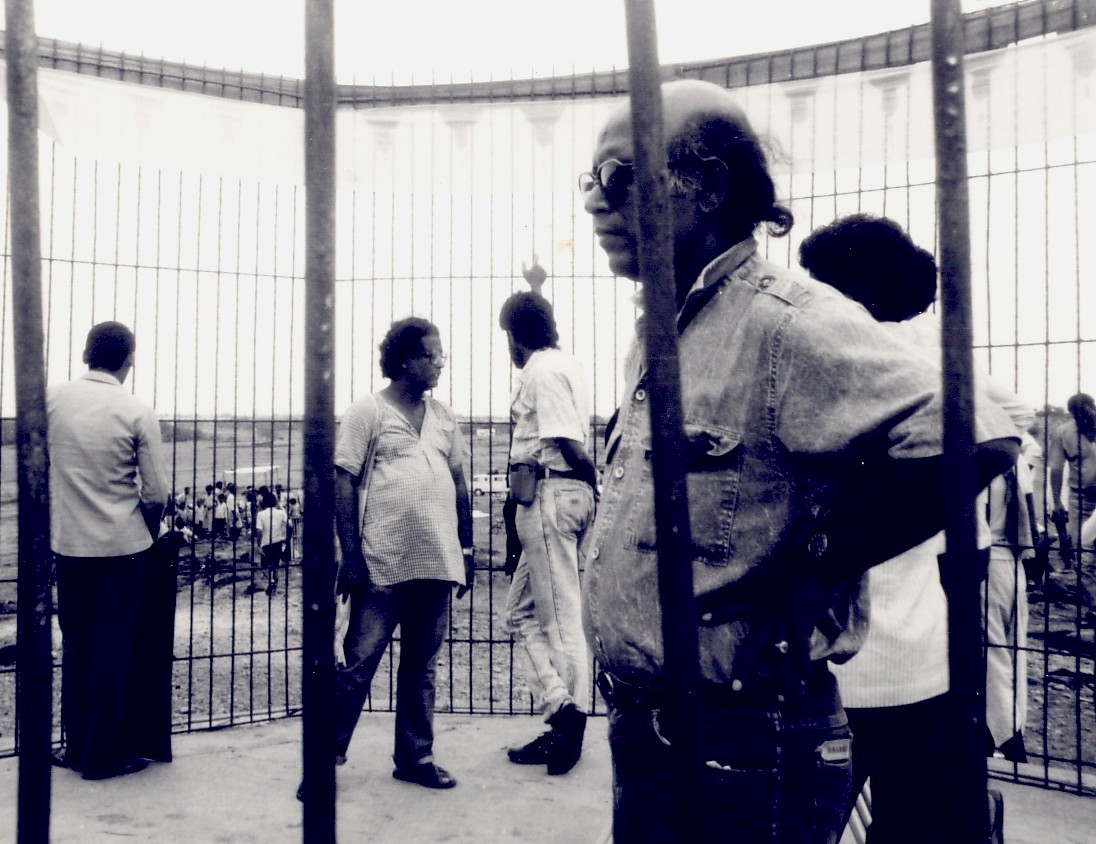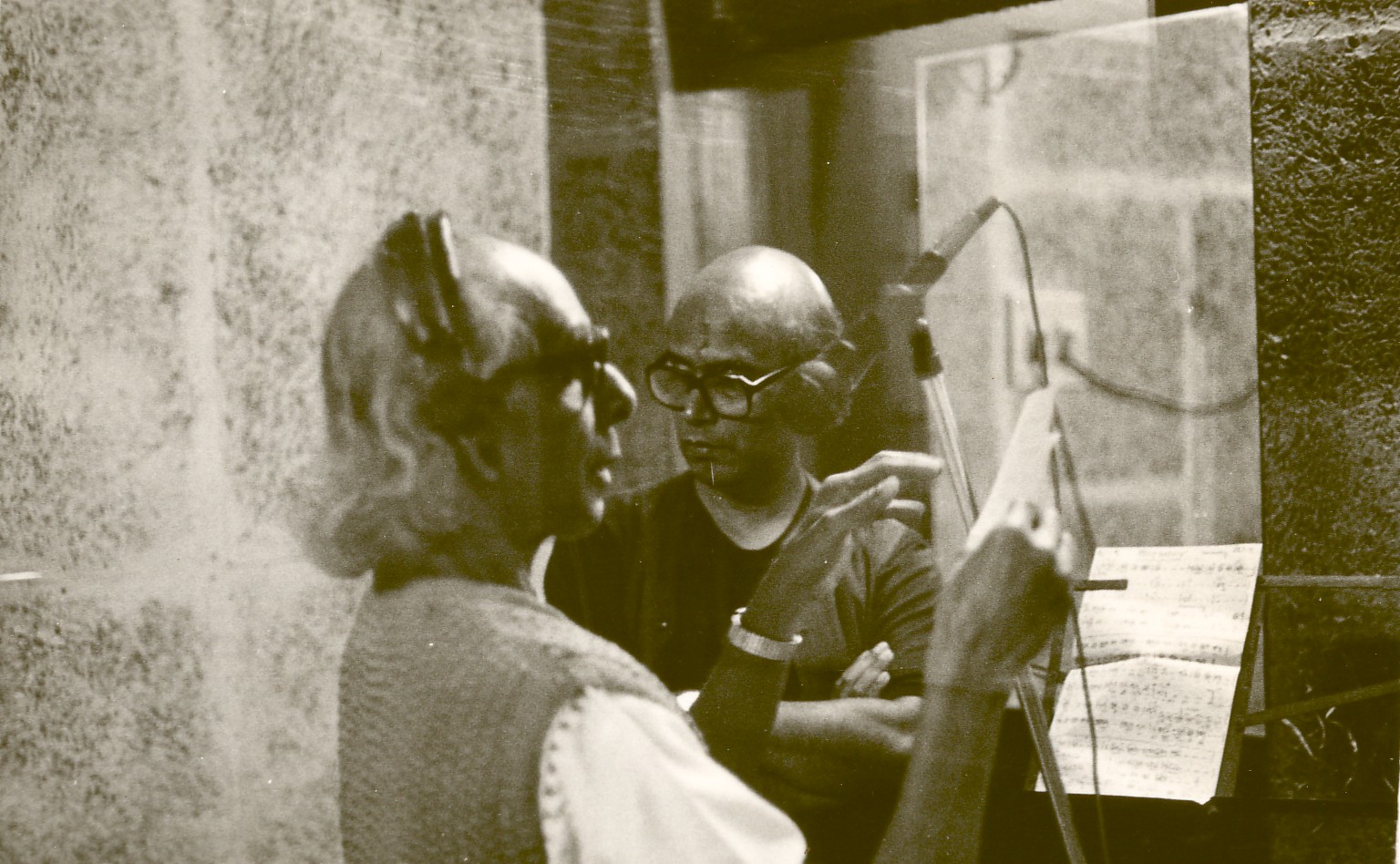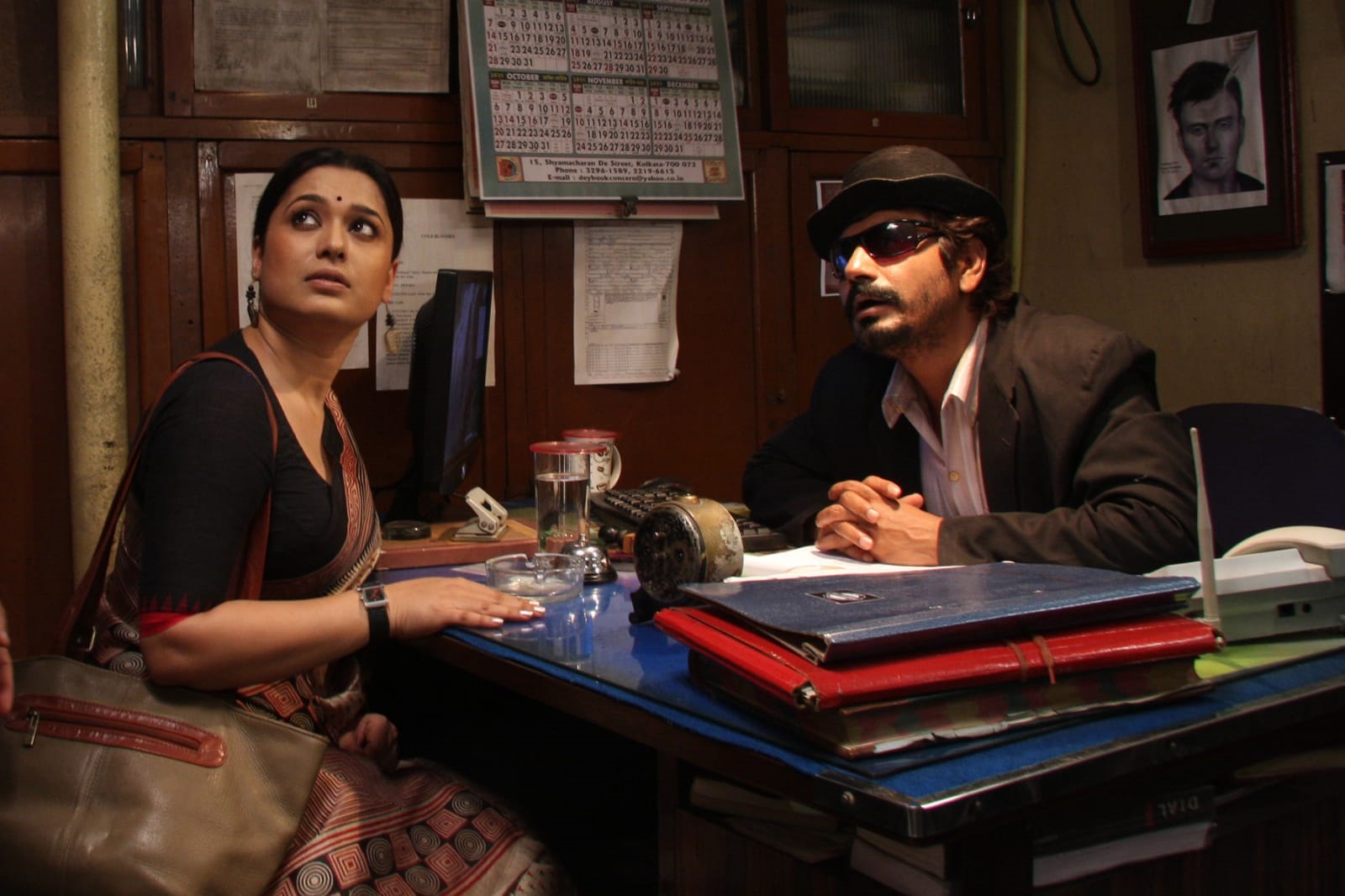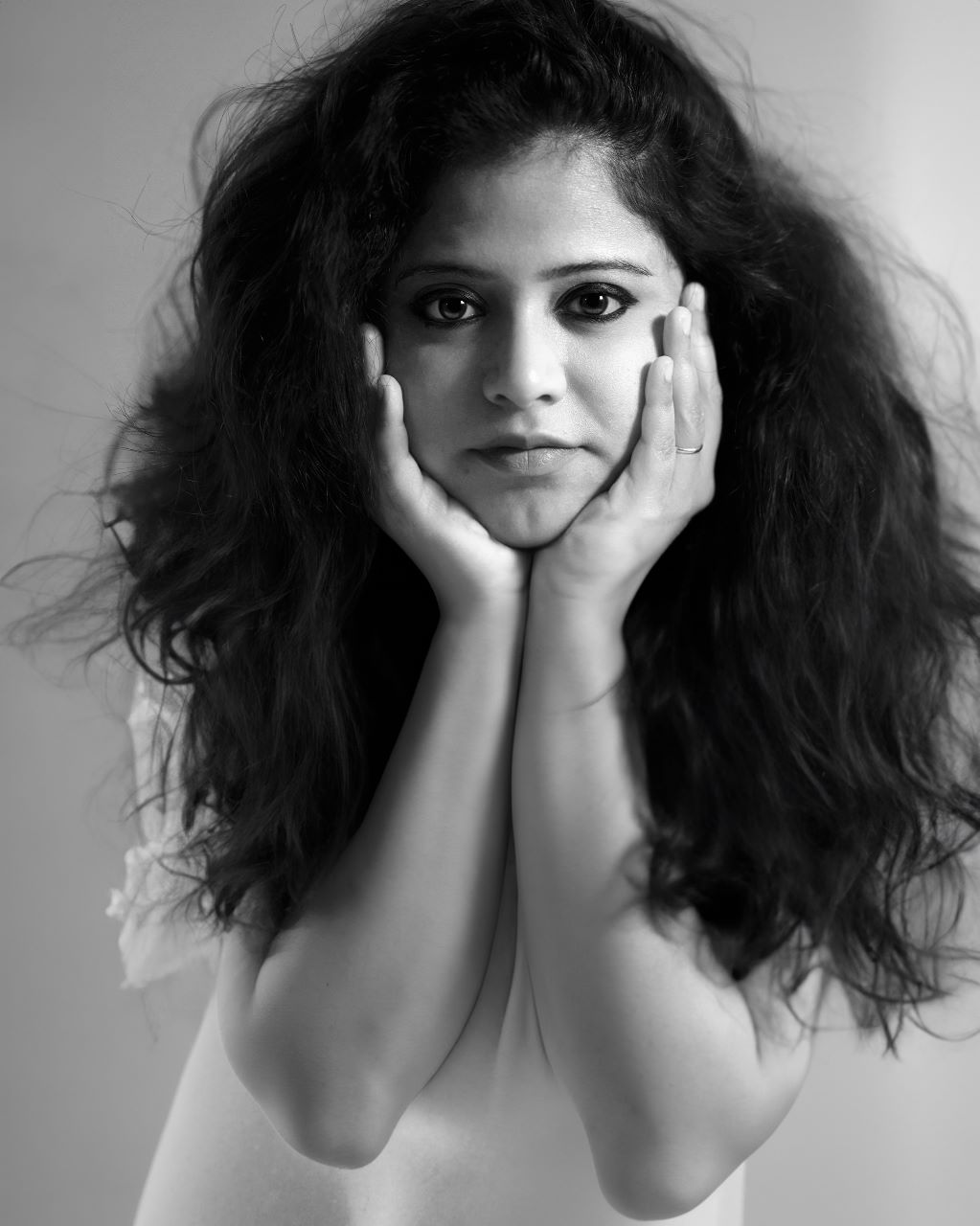
That BUDDHADEB DASGUPTA was a poet is no secret. But that he should have been a musician is an observation which only his daughter – music director ALOKANANDA DASGUPTA – can make. Very few know about the man behind the music of his films. Two years after his demise, his daughter lends an ear to his music room to join the notes from his journey from Dooratwa to Anwar Ka Ajab Kissa
Why BFA commissioned this piece:
Unfortunately, very little has been properly documented about the master’s cinema. At BFA, we feel it is important to start take babysteps to understand how he created the world of his cinema. Music has been our starting point and who better than to pen an emotional dossier than his gifted daughter to write this piece? ALOKANANDA first composed a tribute piece for him on his birth anniversary. Then, she wrote an indepth piece that gave an insight in his music without being a critical analysis
Baba should have been a musician. The man, the artist, was inseparable from the world of music. He could never understand how someone who loves cinema and poetry could also not love music, painting, wine, luchi and chocolates. These belonged to the same family, he would say. But music and cinema were entangled. As he said, it was a bond so strong that prompted him to even direct with his sense of music.
When asked why he chose French composer Maurice Ravel’s Bolero in Roshomon instead of traditional Japanese music, Kurosawa had responded saying that music has no language. Baba was deeply moved by this comment. He decided very early on that he wanted to experiment and move away from the conventional. We hear this transition in quite a stark manner.

In Dooratwa, we hear the classical sitar only to suddenly be heavily contrasted with this ricochet sort of cello as the classic scene unfolds when actor Pradip Mukherjee does roll call shifting from one end to the other end of the screen. It is here when I first noticed Baba’s love for “impressionism”. The music was oscillating, trying to imitate the motion of the scene. This continued as he ran frantically towards Mamata Shankar. The music captured the mayhem of his mind. We also heard the importance of sound and the use of sound as the score. His favourite “train sound” burst into the scene and broke a very important conversation.
Baba, I would say, found himself in quite a musical pickle. Here he was a man born in Anara, where the only exposure to music was the radio that played Rabindra Sangeets and traditional/Indian classical music. His brothers and he would huddle around the radio, occasionally pouring water on it. They thought that it would help quench the thirst of the singers lending their voice to songs on the radio!
Baba was always a loner and forever lost in his thoughts. He found music in the cluster of bugs on a tree bark, the wonderful ball, the sound of the pheriwalas.
Yet, he was hungry for more. While teaching economics, he started buying records of Western classical music including the Carpenters and Joan Baez. His Western classical collection wasn’t traditional either. Along with Beethoven, there were a lot of Shostakovich, Shoenberg, Debussy and Ravel. And, of course, his much-needed daily dose of Pink Floyd and Rabindra Sangeet and Rajanikanti Sen who was the grandfather of my mother, Kuntala Dasgupta.
Baba and Ma both shared their love for dance. My sister, Rajeshwari, was a Bharatnatyam dancer while I was into Odissi. But somehow Baba couldn’t express much through rhythms. That was all because of his love for melody...
In Bagh Bahadur, he decided to overcome this exact hurdle. He took the drums, owned it and weaved it directly into the narrative
There was a lot going on inside Baba’s head. Good music overwhelmed him. He almost couldn’t take it and had to express his interpretation. Thus Grihajuddha happened and it was the man himself who took upon the task of scoring this daring, poignant, poetic gem. He opened with the gongs, a symbolic alarm to this very specific ‘Baba-esque’ existential reality that the characters in the film are trying to break free from. And, of course, then began that melody that ripped and shred the heart into tiny pieces much like Baba’s, Ma’s, my sister’s and mine. Interestingly, TS Eliot brought us all together. Remember Eliot’s line from Prelude’s - “his soul stretched tightly across the sky”? The pain and beauty sat languidly on the melody, hung in suspension, in perfect balance.
My favourite was his use of the harmonica. This theme returned when Anjan Dutta and Mamata Shankar embraced. Through the music and the cinematography, Baba wanted to express that their world doesn’t revolve around each other, but the world revolves around their love and pain.
Baba and Ma both shared their love for dance. My sister, Rajeshwari, was a Bharatnatyam dancer while I was into Odissi. But somehow Baba couldn’t express much through rhythms. That was all because of his love for melody. In Bagh Bahadur, he decided to overcome this exact hurdle. He took the drums, owned it and weaved it directly into the narrative. His instructions to composer Shantanu Mohapatra were to make sure that the rhythm follows the angst of the tiger man. For the first time, I think the world witnessed such an incredibly ironic and poignant tale unfolding before their eyes through the dance movements of this peculiarly talented man Pawan Malhotra. He danced to survive and to perish. And I think, the music was at par with the story telling in telling this tale.

Charachar was almost a tribute to Ma her love for birds. She would ask him: “If people love birds, why would they keep them in cages?” My uncle, Biswadeb Dasgupta, understood the brief in all sense of the term and half their battle was won when they both agreed upon the instrument. They chose the flute. Yes, we were back to impressionism. There has been no better instrument than a wind instrument to imitate bird songs.
Baba also wanted to experiment with silence and repetition in this film. He wanted to use long pauses to reflect the Lokha’s sighs and loneliness. He wanted one powerful flute theme that would capture the shelter of the wings and that theme did exactly that. It was such a short melody that was followed by a counter melody. And that’s it. That’s all it took for the film to be one of the rarest gems in cinema throughout time.
He just wanted so many different styles of music to be incorporated in his narrative. Yet, at the same time, it felt far removed from his original love of Western classical. Thus I happened. And no, this wasn’t planned for
A lot happened in the mean time. He listened more and more. He watched more and more. He read more and more. His hunger increased till it was almost unbearable. He was also listening to a lot of contemporary music happening in Indian films at that time and was very hopeful of the following generation. He wanted to experiment. He was daring and wanted to push the boundaries so much so that he even thought of dabbling with electronic music in his films.
He just wanted so many different styles of music to be incorporated in his narrative. Yet, at the same time, it felt far removed from his original love of Western classical. Thus I happened. And no, this wasn’t planned for. My sister was assisting him at that time and working on his screenplays.
I was just running on the musical hamster wheel not knowing how I can channelize my passion. I had recently finished my musical studies when Woh/Shey happened along with the Quartet/Treyodoshi.
“Shiuli, simply because you have studied the subject doesn’t mean that you can compose. If you want to compose for me, you will have to prove it to me” - those were more or less his words. Of course, they were laden heavily with a lot of love, hope and exceptions.
And then it was like a perfect match. I just knew what he wanted. He knew what I felt.
In Woh, both of us explored the indie music zone with Woh Chand. I used a lot of Celtic elements in the piece. Then we took up the challenge of creating the original music from the soil of Purulia.
I knew that Baba wouldn’t be satisfied until we had discovered all the corners of his life and upbringing. He has always used the folk idiom of Purulia in his cinema. That was most profound in Uttara. But it is a topic that I was/am still very new to and hence, I won’t go into the in-depth exploration of the songs of Uttara.

But, this time he wanted me to create something from scratch. Thus the song, “Ekodino”, happened. It was choreographed by Sukalyan Bhattacharya. I think he wasn’t too happy with the music of Woh. I felt what he was trying to express and dove straight into Treyodoshi while immersing myself in the seamlessly woven tales of Tagore. The opening music of Treyodoshi was one of the first pieces that I had composed while studying at York University. I was incredibly scared of making him listen to it.
He had listened to the cello before. But this time it was something different. The range, the fact that one plays the cello as if they are making love to the instrument while holding it close to their body - all of these moved him. My interest was well-supported by Baba as we both watched a recording of the famous French classical violinist Renaud Capuçon and his brother’s performance of Brahm’s double concerto written for the cello and the violin
Much later when he did, he found my extensive use of the classical cello to be very interesting. It later on became an obsession with me.
My interest was well-supported by Baba as we both watched a recording of the famous French classical violinist Renaud Capuçon and his brother’s performance of Brahm’s double concerto written for the cello and the violin.
He had listened to the cello before. But this time it was something different. The range, the fact that one plays the cello as if they are making love to the instrument while holding it close to their body - all of these moved him.
Once again we agreed upon one of our favourite instruments - the cello. It remains an instrument that I was right for even though I play the piano.

In Tope, it was strictly the powerful irony that drove the music forward. The stunning visuals, the man that lives under water, the dance of the devil to “Ke nibi phul” in an empty door frame against the harsh beauty of the landscape was all too breathtaking for me to handle. I almost had an American Beauty moment where there was too much beauty in this stunning piece of cinema for me to think about the apt score that would match it.
- “What do I do, Baba?”
- “Follow the story with a melody so sombre that it would capture the eerie stillness of the ‘kashbon’ that the little girl walks through.
He gave me this start and that was the first scene that I scored. Thus the Nomad theme in Tope, which begins with these ominous cello pizzicatos, is meant to confuse the listener about what would follow. It followed a legato cello motif. First, there is a statement or a question followed by an answer and then a counter melody. The essence was to ask if it is fear? Or is it beauty? It’s just the stillness of the air. I remembered the line from James Joyce’s Araby where he details the boy’s feelings by describing the room with the words: “The air was hung”. The cello melody followed that world. We decided to bring back folk and used a lot of the dotara and the flute.
In Tope, it was strictly the powerful irony that drove the music forward. The stunning visuals, the man that lives under water, the dance of the devil to “Ke nibi phul” in an empty door frame against the harsh beauty of the landscape was all too breathtaking for me to handle
Here, in this piece, I wanted to play homage to his “bagh” from Bagh Bahadur (the common tiger theme) and toGrihajuddha. Thus, I book-ended with a heavy rhythmic motif and the sounds of the eerie gongs. They serve as the same reminder of the truth that Baba tried to escape from through his extended reality.

Nawazuddin Siddique and Ananya Chatterjee in 'Anwar ka Ajab Kissa'
I must conclude with some honourable mentions. The Mozartian flute piece from Phera was a combined effort by Jyotishko Dasgupta and Baba. It remains as one of my favourite pieces of music. The minor key, the scottatos in the beginning, the counter melody were so mellifluous. We can hear Baba’s love for underlining solitude and magic with either the flute or the cello. In the first story where the boy watches the foxes from behind the tree, I tried to bring this Akira Kurosawa’s Dreams-like eeriness. That's evident in the ghost dance from Urojahaj. I created a wind accompaniment that imitates bird songs followed by a melody that is “other worldly” to match the visuals.
In Anwar ka Ajab Kissa, the same is expressed when Anwar stands at the bridge looking down at the vast nothingness below. Only this time, it is the cello again. Of all my scores, it was Anwar’s that Baba liked the most. We explored fun songs (Hattima Tim Tim) and brought back his love for old Hindi songs in Muskurah. Nothing expressed the quirk, silence and loneliness better than a solo instrument that played a haunting melody which acts as the protagonist in his films.
He never separated the two worlds. I think… I feel… I truly believe… Baba should have been a musician.

